
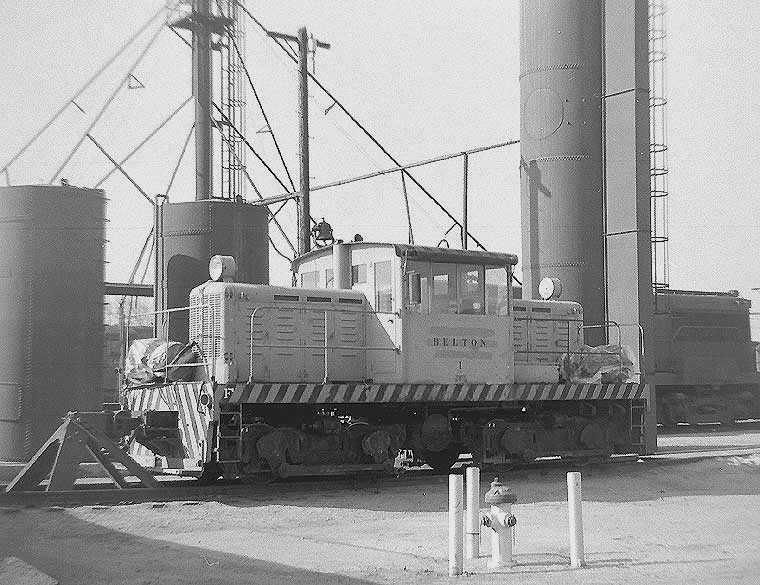
In early 1964, the U.S. Navy sold one of its Moffat Field switchers, the above 1942 Whitcomb 50 tonner formerly known as the #65-00378, to the Belton Railroad of Texas, who dropped a host of decimal points to rename it # 1. Here we see it hiding behind the San Jose Roundhouse's storage tanks. Notice the no-nonsense repaint - the loco was orange, if I recall correctly, so a fair guess is that the Navy lettering was brushed-out with SP MofW orange. Did you catch that bell on the cab roof? That must be spare parts under the plastic on the running boards.
The engine must have had a slow journey to Texas, unless it was on a flatcar.
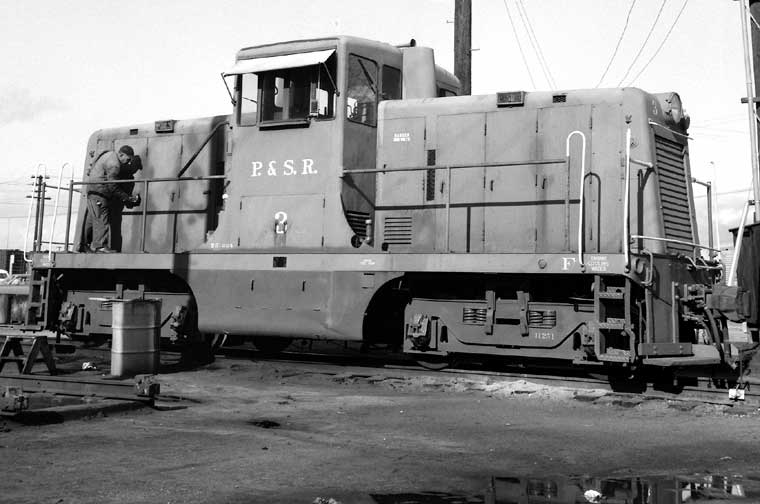
I have no idea what Petaluma & Santa Rosa GE 44 Tonner # 3 was doing on the SanJose Roundhouse garden track when I photographed her in January of 1965. Although she was covered with what looks like primer blotches, she was not in the process of being repainted.
P&SR GE's 3 & 4 both were retired by parent SP in 1966 (according to a Strapac SP Annual, and the latter engine was apparently stll up in Petaluma at the time of this photo. Number 3, however, supposedly left the P&SR in (on March 19?) 1964 for duties as the Sacramento shop goat.
By August or September, she was back on NMP rails - a photo inthe Fall, 1997 Issue of Vintage Rails places her at Tiburon (thanks, Rob!). So, what is # 3 doing a few months later in San Jose? Wx4 staff's best guess is that she was on loan to a local industry at the time. Further confusing things is, an Internet source that states # 3 was scrapped by Associated Metals in 1965, not 1966. AND, if you want contradiction to just about all of the above, try peeking at a copy of Fred Stindt's Northwestern Pacific, Volume II, page 127.
In the Grand scheme of things, as Lucius beebe used to put it, none of this matters very much, but it nevertheless is an interesting puzzle.
In the meantime, we're just happy to have a nice photo of this cute little 1943-built, ex San Francisco & Napa Valley loco. Should you wish to peruse this photo in finer detail, Wx4 staff has placed a 229k grand-whammy version of the above at your disposal.
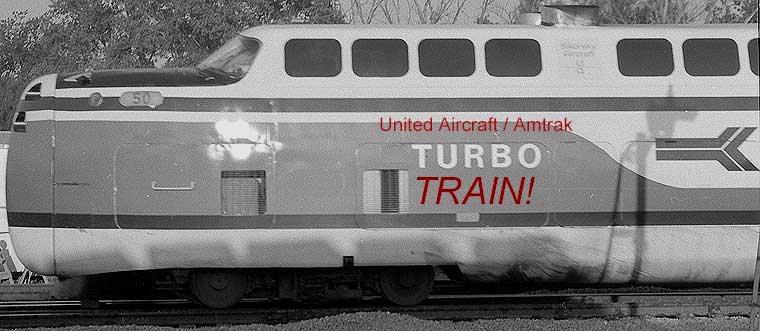
In August of 1971, Amtrak's Turbo Train visited San Jose as part of a nation-wide tour to promote the new railroad. United Aircraft was also hoping to raise interest in raiload turbine engine technology, which was near death after the recent retirement of the UP's last turbines. The UA turbines wound-up operating out of Boston after the tour - in 1974 I stood on an overpass as a Turbo roared-by underneath - very impressive! Rohr also built some similar trainsets for Amtrak, but the first Gas Crisis dimmed Amtrak's enthusiasm for the concept. The turbines consumed almost as much fuel when stopped as they did at speed.
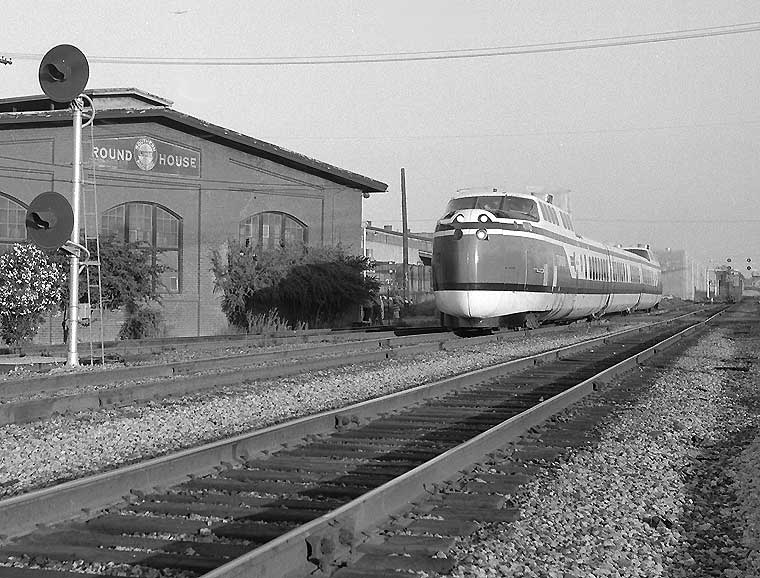
or going...
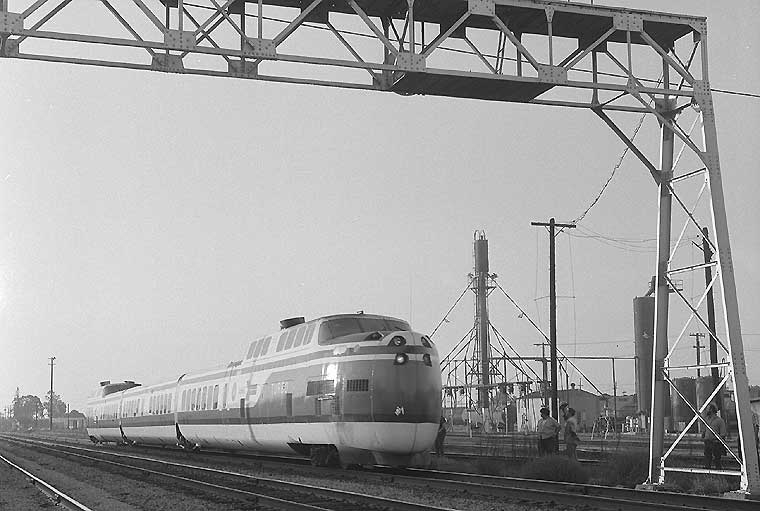
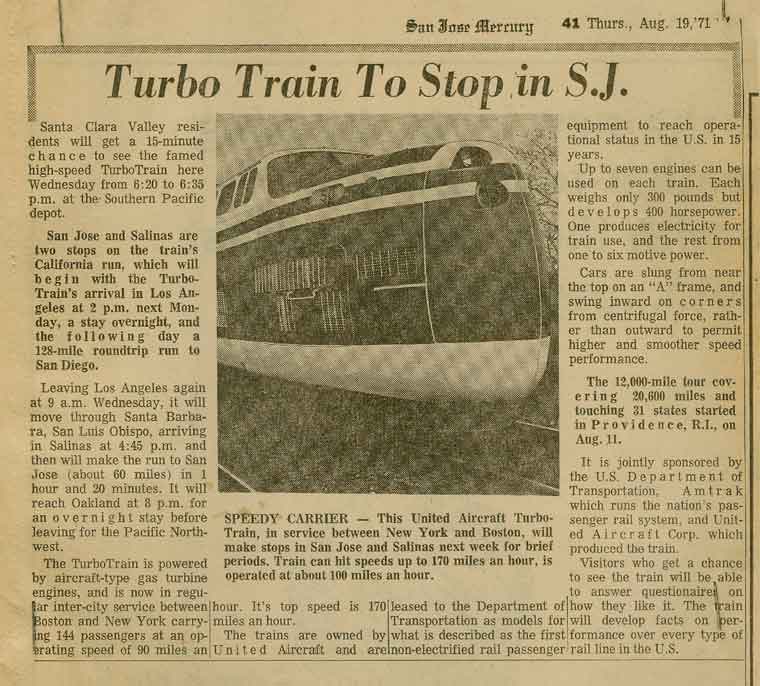
Baldwins in San Jose Helper Service?
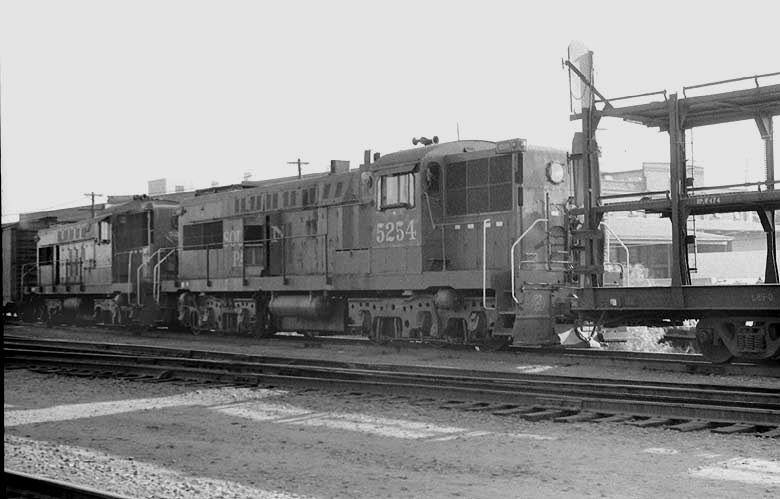
Fishie fishie! Heavens, you NEVER entrain helpers behind an auto rack! Nope, it's just a tired old pair of 1952-built AS616's, the 5254 and 5262, on their way from Los Angeles to the scrap yard at Benicia or Richmond in the Fall of 1969. By this time, Baldwin hood units were about done on SP, only four surviving into 1970, their last year. By 1962, or so, all Baldwins were banished from the Bay Area and elsewhere to their final assignments on the Shasta, Portland and Los Angeles divisions. As road units, the AS's sucked - they were slow, rigid, rough on crews and track, and they were not particularly dependable. Their engines also leaked oil like crazy. An Oregon and Northwestern mechanic once told me that their AS616's leaked 35 gallons of oil every hundred miles! Nevertheless, the Baldwins had huge Westinghouse traction motors that could pull down a house, making the units ideal for switching and transfer service. A testimonial to their utility in 'snail' service is that these two boys lasted 17 years, about the same lifespan as many other SP first generation units.
Actually, SP really DID operate helper service in steam days eastbound out of San Jose up the 0.6% grade to Morgan Hill (M.H. was named after the first Yankee settler in that area, not a geographic feature, BTW). Typically, they cut-off at Madrone (Perry). Occasionally, they assisted westbounds up the other side as well. Typically, Hogs (2-8-0's) were used, and this arrangement lasted at least until 1950.
Fall 1969